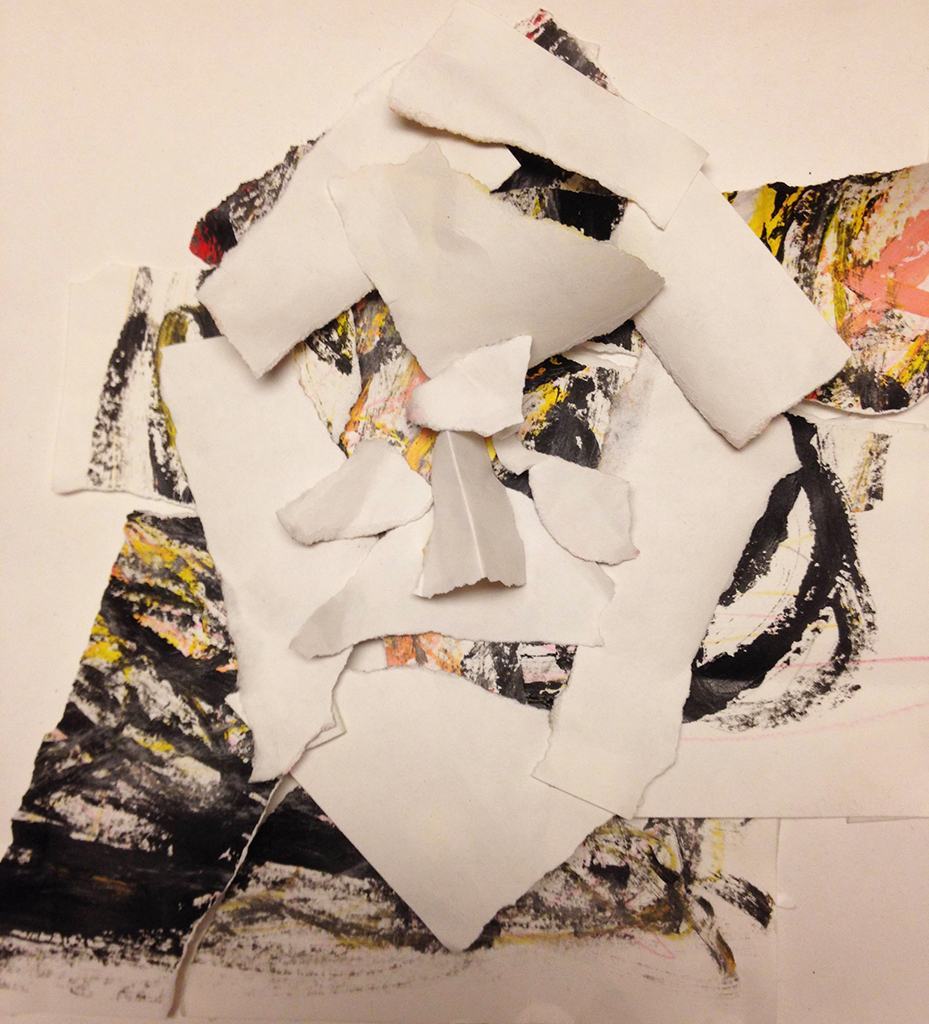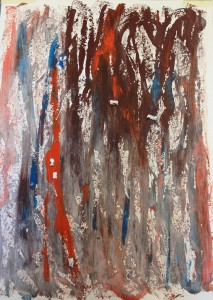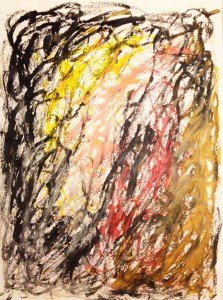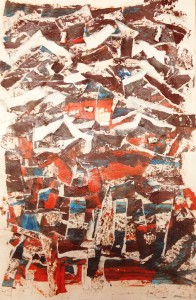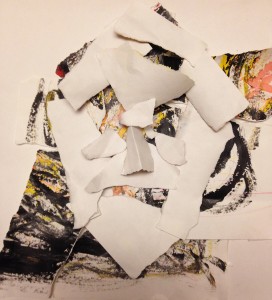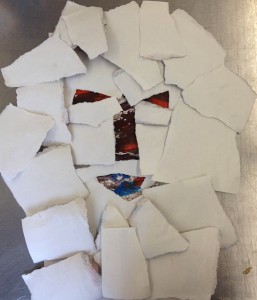This is the third bridge project, and it consists of images of collages done in our studio class and quotes of Oliver Sackss’ article The Mind’s Eye and personal observations of said article written for our seminar class.
“Being a “whole-body seer,” for Hull, means shifting his attention, his center of gravity, to the other senses, and he writes again and again of how these have assumed a new richness and power.” (page 2, Oliver Sacks, The Mind’s Eye)
I liked how this was a very slight critique towards how we give such a big weight to seeing, yet not really understanding. “His center of gravity” is very poetic, yet harsh as well.
“I had now read three memoirs, strikingly differ- ent in their depictions of the visual experience of blinded people: Hull with his acquiescent de- scent into imageless “deep blindness,” Torey with his “compulsive visualization” and meticu- lous construction of an internal visual world, and Tenberken with her impulsive, almost novelistic, visual freedom, along with her remarkable and specific gift of synesthesia. Was there any such thing, I now wondered, as a “typical” blind experience?” (page 5, Oliver Sacks, The Mind’s Eye)
Sacks cites the different memories of these writers and how their new concept of “seeing” has developed into variations of mental imagery rather than the “regular” concept of seeing with one’s eyes.
“Though she has been totally blind for twenty years now, Tenberken continues to use all her other senses, along with verbal descriptions, visual memories, and a strong pictorial and synesthetic sensibility, to construct “pictures” of landscapes and rooms, of environments and scenes- pictures so lively and detailed as to astonish her listeners.” (page 5, Oliver Sacks, The Mind’s Eye)
First, I enjoyed the use of scientific terms only at the body of this long sentence, yet at the start and end of it, it is very simple and easy to understand.
“to construct “pictures” of landscapes and rooms, of environments and scenes”- it is a very fast part, and while reading it you cannot take a breath, not only because how it is written but also because of the meaning and choice of words.
“I was reminded of Amy, a colleague who had been deafened by scarlet fever at the age of nine but was so adept a lipreader that I often forgot she was deaf. Once, when I absent-mindedly turned away from her as I was speaking, she said sharply, “I can no longer hear you.”
“You mean you can no longer see me,” I said.
“You may call it seeing,” she answered, “but I experience it as hearing.” ” (page 6, Oliver Sacks, The Mind’s Eye)
Oliver Sacks explores the definition of mental imagery, and how and to what extent does a person have the ability to change and alter the functions of his mind. Sacks chose to focus on the variety of mental imagery capacity primarily based on memoirs of different writers experiencing loss of eyesight and how they dealt with blindness.
Finally, to what extant is eyesight crucial? Will humanity be better off without it? Will humans be able to “see” beyond seeing? How would that effect humanity and the world?
